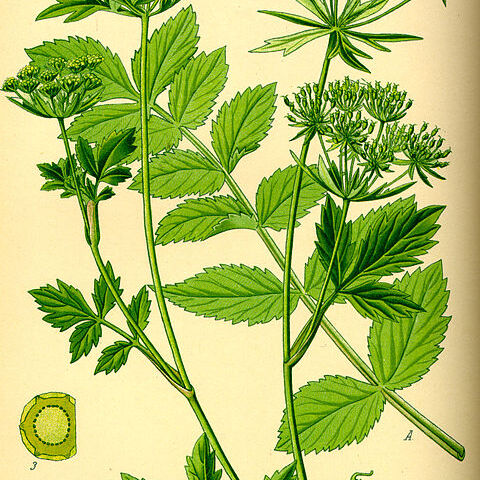Herbs perennial, aquatic or semi-aquatic, glabrous throughout. Rhizomatous, root fibrous. Stem suberect, usually stoloniferous. Arial leaves 1-pinnate, submerged leaves more dissected. Umbels compound, usually opposite leaves; bracts and bracteoles several, oblong or lanceolate, margins membranous, usually reflexed. Calyx teeth subulate or triangular, caducous. Petals white, obovate, base short-attenuate, apex retuse with small inflexed lobule. Stylopodium conic; styles longer than the stylopodium, recurved. Fruit ovoid, subdidymous, slightly compressed laterally, glabrous; exocarp corky and slightly thickened; dorsal and intermediate ribs filiform, lateral ribs obscure; vittae numerous, small, forming a continuous band encircling the seed. Seed face plane. Carpophore 2-cleft to base.
Fr broadly ovate to orbicular, laterally flattened, constricted at the commissure, the outer wall thickened and corky, obscuring the very narrow ribs; oil-tubes very numerous, carpophore wanting; umbels compound, terminal and lf-opposed; involucre conspicuous, of narrow bracts; umbellets 1–2 cm wide; bractlets several, narrow, sep minute or none; pet white; stylopodium conic; fibrous-rooted aquatic perennials with once-pinnate lvs, the lfls ± incised. Only the following sp.
Fruit suborbicular, almost didymous, laterally depressed and somewhat constricted at the commissure; ribs poorly developed and not conspicuous, lateral ribs not marginal. Mericarps subpentagonal in section.
Flowers in compound umbels with well-developed bracts and bracteoles.
Petals broadly obcordate, with an inflexed point at the apex.
Robust glabrous herbs with pinnate leaves and hollow stems.
Sepals subulate-triangular, quite conspicuous.
Vittae deeply embedded in the mesocarp.
Carpophore adnate to the mericarps.

